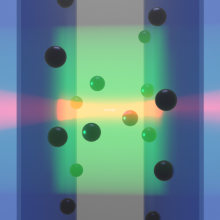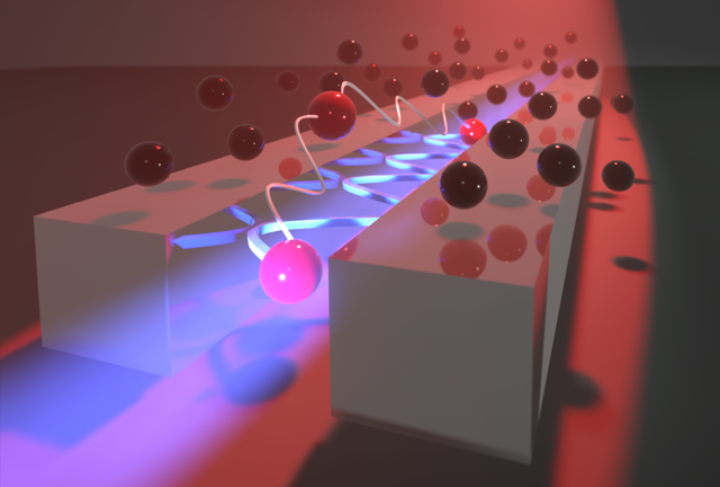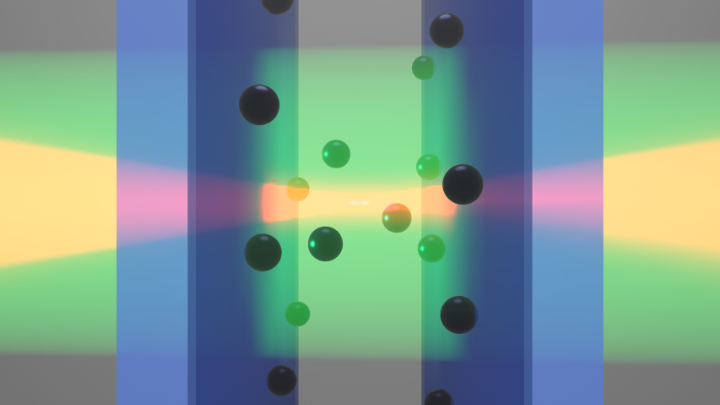Any development of quantum devices and quantum networks is fundamentally limited by the noise that destroys stored quantum information over time. Our platform based on thermal neutral atoms tries to mitigate motional noise by either operating faster than the motion of the atoms compared to the optical wavelength or increasing the interaction strength based on tiny geometries.
One of our recent studies [Phys. Rev. Research 4, 023073] focusses on the combination of a silicon waveguide immersed in a high density thermal rubidium vapor. The waveguide is designed such that most of the propagating light is confined within a gap 30 times smaller than its wavelengt. Excited rubidium atoms can emit a photon in the waveguide that can be shared with another atom inside the gap at much larger distance. This so called "Purcell effect" increases the interaction between resonant atoms inside the gap and creates a highly nonlinear medium, meaning the properties of the medium drastically change depending on the number of photons. It results in the first demonstration of repulsive dipole interactions in a thermal vapor.
In our other publication [Phys. Rev. Lett. 128, 173401], strong laser pulses hit a micrometer-sized glass cell filled with rubidium at room temperature and eject atoms initially stuck to its internal surface. This process, called "light-induced atomic desorption" (LIAD), rapidly increases the atomic density within a few nanoseconds. A well-established theory predicts dipolar interactions forming between atoms at a high density. One observable effect in a confined geometry is a shift of the atomic line spectrum towards red wavelengths. We verify these predictions in our experiment on a so far unexplored nanosecond timescale.
These "local density switching" and "Purcell enhancement" not only pave the way for our approach towards a gigahertz bandwidth single-photon source. They also form a promising basis for future quantum devices relying on strong dipolar interactions.




